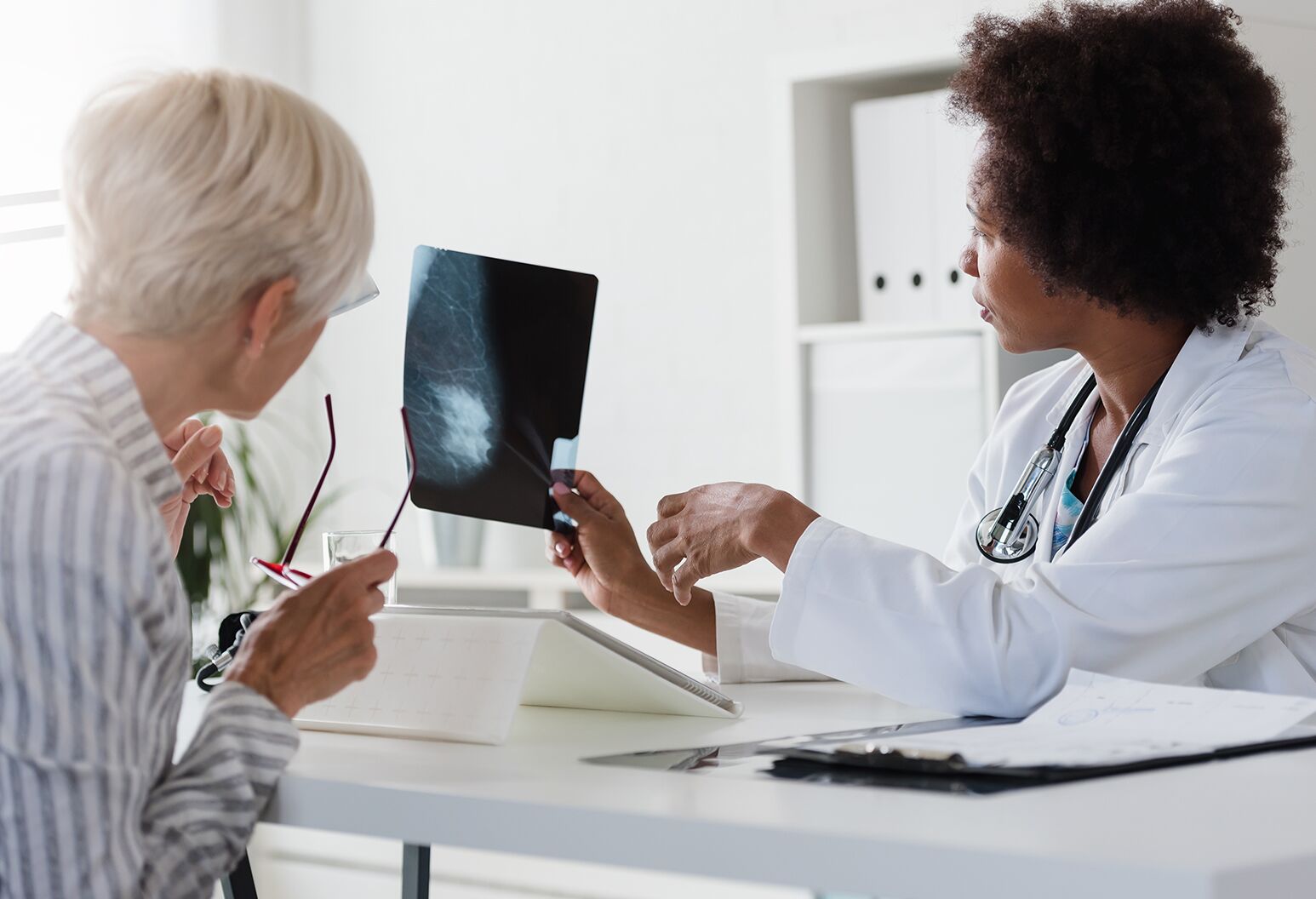women's health
What Is Perimenopause?

Learn more about the different forms of breast cancer and their treatment options.
4 min read
Hearing that you have breast cancer is scary enough, but when a doctor starts using terms like “triple-negative” or “HER2-positive,” it can send you into a downward spiral of fear and anxiety.
The reality is, breast cancer isn’t just one disease—it’s a collection of different subtypes, each behaving differently and requiring its own approach to treatment. Understanding your specific diagnosis is key to navigating your treatment journey with more clarity. So, let’s break it down together so you can feel more in control and understand what this all means for your treatment plan.
To determine the type of breast cancer you have, doctors will look for three key receptors:
You can think of these receptors like light switches. If the cancer tests positive for one or more of these receptors, it means those switches are “on” and fueling cancer growth. But knowing which receptors are activated gives doctors clear treatment targets. Here’s how that works:
By providing your email address, you agree to receive email communication from The Well.
Hormone-positive breast cancer (ER+ or PR+): If your cancer is fueled by estrogen and/or progesterone, hormone-blocking treatments (like tamoxifen or aromatase inhibitors) can effectively slow or stop its growth.
HER2-positive breast cancer: Around 20% of breast cancers overexpress the HER2 protein, which can drive aggressive growth. However, modern HER2-targeted therapies (such as Herceptin) have dramatically improved treatment outcomes.
In some cases, breast cancer cells may test positive for all three receptors—estrogen, progesterone, and HER2—making it triple-positive breast cancer. While this may sound daunting, it actually opens up more treatment options. Triple-positive cancers can be treated with a combination of hormonal therapies (to block estrogen and progesterone) and HER2-targeted therapies (to block the HER2 protein), offering a comprehensive approach to treatment.
If the tumor doesn’t express any of the three receptors, that’s known as triple-negative breast cancer (TNBC). Without these switches, common hormone therapies and HER2-targeted treatments aren’t effective. This can make TNBC more challenging to treat, as it tends to be more aggressive and may grow or spread faster than other subtypes.
That said, TNBC responds well to chemotherapy, which remains the cornerstone of treatment. In addition, new advancements in immunotherapy—which helps the immune system recognize and destroy cancer cells—have shown great promise for treating certain TNBC cases. Depending on your case, your doctor may recommend chemotherapy before surgery (neoadjuvant therapy) to shrink the tumor or after surgery (adjuvant therapy) to reduce the risk of recurrence.
If you have hormone-positive breast cancer, you might hear about something called the oncotype score. This is a genetic test that looks at the specific characteristics of your tumor to determine how likely it is to come back and whether you would benefit from chemotherapy. For many patients, this can help avoid unnecessary chemotherapy while still ensuring the best possible outcome. It’s one more way that breast cancer treatment is becoming increasingly personalized.
In addition to the subtype, the stage of your cancer is another important piece of the puzzle. Staging tells us how far the cancer has spread, which guides how aggressive treatment should be. Here’s a quick breakdown of the stages:
While being diagnosed with breast cancer is overwhelming, understanding your specific diagnosis empowers you to take an active role in your treatment journey. Each breast cancer diagnosis is unique, and the tools we use to treat it are tailored to fit your needs. Don’t hesitate to ask your doctor for more information and remember that the goal is always to create a treatment plan that gives you the best possible outcome.
Thanks to continuous advancements in breast cancer treatment—especially in targeted therapies and immunotherapy—the landscape is constantly evolving. Whether you have hormone-positive, HER2-positive, triple-negative, or triple-positive breast cancer, your care team will use the latest strategies to give you the best chance for a positive outcome.
The Well is Northwell Health’s commitment to the future of health care. In this time of information overabundance, much of which is inaccurate, unhelpful, or even difficult to understand, Northwell Health is on a mission to make a difference as an honest, trusted, and caring partner. The site connects with consumers to provide them with personalized content that reduces their stress, makes them laugh, and ultimately feel more confident and capable on their healthcare journey.